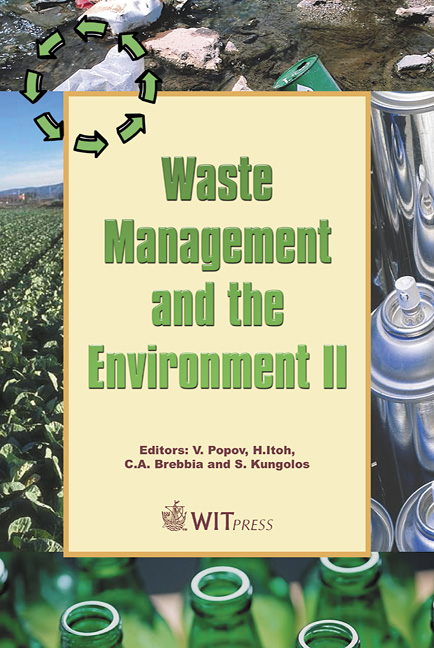Treatment Of MSW Fly Ashes Using The Electrodialytic Remediation Technique
Price
Free (open access)
Transaction
Volume
78
Pages
11
Published
2004
Size
389 kb
Paper DOI
10.2495/WM040071
Copyright
WIT Press
Author(s)
C. Ferreira, A. B. Ribeiro & L. M. Ottosen
Abstract
In the present work the electrodialytic remediation technique is applied for the treatment of fly ash, a hazardous by-product resulting from the incineration of municipal solid waste. Results are presented for an experiment conducted for 40 days at 38 mA, with a continuously stirred cell. Experimental parameters monitored include voltage drop, pH and electrolyte’s volumes. Evolution of heavy metal concentration with time in the different compartments is analysed. The performance of sodium gluconate for heavy metals extraction from fly ash in different pH conditions is evaluated in batch extraction tests and during the electrodialytic treatment. This substance was found to perform well for pH below 6 and above 9, although extractions are better in the acidic region. Other relevant observations include the retention of significant amounts of heavy metals on the cation-exchange membrane separating chambers III and IV and the dissolution of a large percentage of sample during the treatment. 39% of zinc, 14% of lead, 18% of copper and 60% of cadmium were removed from fly ash using the electrodialytic technique and these results are compared with previously reported experiments on similar materials Keywords: heavy metals; MSW fly ash; electrodialytic remediation. 1 Introduction The electrodialytic remediation method was originally developed at the Technical University of Denmark for remediation of contaminated soil [1]. The waste to be treated is saturated with water and placed in chamber III of the
Keywords
heavy metals; MSW fly ash; electrodialytic remediation.





